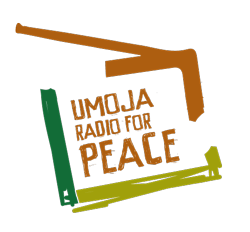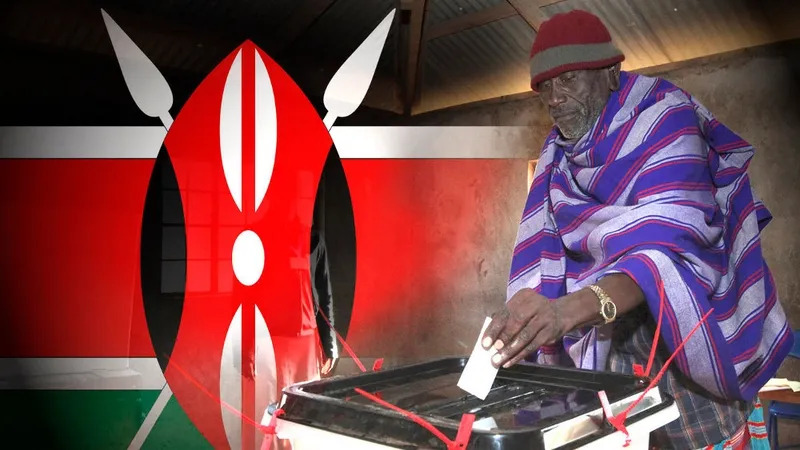By Rose Kwamboka
Grace Muthongi, a youth resident of Kianda in Kibra, voted in a general election for the first time in 2017. The results of that election were marred with violence. “They were burning people and their houses just because their candidate had not won.”
That incident gripped her with fear over election periods. However, instead of letting the fear cripple her into inaction, she decided to do her part in educating the public on the importance of peace during elections. “We started early creating awareness about the importance of peace, especially to the youth during and after elections.” She ensured to pick a mode of communication that the youth would relate to for easy uptake of the information being conveyed. “We educated through the use of theatre, poetry, and art,” she said in a post-election interview with Pamoja FM.
“The only burning that occurred during the 2022 election was at Olympic. Even then, it was the supporters of the winning candidate who were celebrating their Presidential candidate’s win by burning tyres on the road and singing in jubilation,” she says, a testimony that all the teachings on peace had not fallen on deaf ears. “The message definitely reached the youth.”
Grace was among many who took up the role of educating the Youth. Otieno, a Kibra politician who did not qualify for the 2017 elections insisted, “Uchaguzi sio ufujo”, adding that, when all is said and done, it is your neighbor whom you remain with and will help you out in times of need. Therefore, the politicians whom we are fighting over know nothing about our problems at the grassroots.
He too, like Grace, was not spared the aftermath of both the 2007 and 2017 elections. “In 2017, the teargas that was continually lobbed to disperse protestors and other crowds would get into our homes. Burning and tearing eyes were just the minor effects. We experienced shortness of breath and chest tightness. I was especially worried for my young son who encountered breathing difficulties and wheezing,” he says. “We would not dare go out even to buy a matchbox, lest we be confused for protestors causing unrest and be flogged by the police keeping guard.” He, however, says that his experience is incomparable to those who lost their lives.
Most of the audience interviewed indicated that they were fearful of the elections following the post-election violence that had occurred after the 2007 general elections.
In a testimonial by Flavia Moraa, a Pamoja FM listener who witnessed houses being torched and her neighbors forced out of their homes during the 2007 post-election chaos, she had expressed that she would never vote again, spelling out that her vote may have contributed to the chaos during the elections. “A talk show by Pamoja FM convinced me otherwise. The teachings on political tolerance, my civic duty and democracy helped me see the power of my vote,” she says.
Why community radios?
A big part of educating the public was through grassroot organizations. Koch FM – a community radio station located in Korogocho, the fourth largest informal settlement in Kenya’s capital Nairobi – was among 41 community radio stations picked by KCOMNET to collaborate in sensitising the public on promoting peace and democracy during an election period.
The choice of community radios as a tool for educating the public was not by chance. The well informed move was fuelled by a couple of factors.
A key consideration in picking the community radio to participate in this program was its location where radio stations in areas marked as hotspots for election violence were preferred for maximum impact. In a pre-election report by the National Cohesion and Integration Commission (NCIC) Nairobi, Nakuru, Kericho, Kisumu, Uasin Gishu and Mombasa had been identified as the six counties likely to experience electoral violence in the 2022 polls based on a three point criteria.
One, these areas were deemed vulnerable to electoral violence due to the existence of informal settlements with a high population, inequality across ethnic communities, competition over scarce resources, the existence of organised criminal gangs, the proliferation of small arms, drug and substance abuse, and history of election violence.
Secondly, hate speech, contestation in party primaries, non-acceptance of election results, fake news, harassment of political party agents, results contrary to opinion polls and disruption of mainstream media were identified in the report as potential triggers whose levels are heightened in the six counties.
Thirdly, the study pointed to weak institutional capacities, which include potential use of force by the police, low trust in the Independent Electoral and Boundaries Commission (IEBC), low trust in the Judiciary, inadequate conflict resolution capacities, and lack of enactment of peace policies that predispose these counties to electoral violence. As such educating the public in these areas would mitigate if not completely alleviate violence likely to be faced.
Further, radios are known to reach a large audience due to their portability, and affordability, even to the poorest populations. This rings more true at the grassroots in Kenya, where residents still believe that “if the radio said it, then it is true”.
Lastly, community radios broadcast in the local language and therefore can promote dialogue and better understanding among conflicting communities. For instance, Pamoja and Koch FM broadcast messages of peace, tolerance and reconciliation among members of their resident communities, that is Kibra and Korogocho respectively. Since their target audience is the youth (between 18 and 35 years), their main language of communication is Swahili with hints of Sheng, a common dialect preferred among the youth.
Capacity Building via Trainings and Workshops
To further enhance impartial reporting in preparation for the elections, the reporters were taken through capacity building training on election processes and conflict-sensitive reporting. “We were trained on all facets of the current electoral procedure. This enabled us to produce objective and accurate information about the electoral process, and give truthful responses to our audiences whenever they have a question regarding the electoral process”, says Catherine Wanjiku, station manager at Koch FM.
One aspect of the training was fact-checking. Alexander Kememwa, a radio presenter, and producer at Pamoja FM insisted that it is the presenter’s job to inform their audience and do so factually. “To curb the spread of misinformation, popularly referred to as ‘fake news’, it is paramount to do your research on both the topic you’ll be discussing and the interviewees. A background check on the interviewee gives the presenter a good idea on what the interviewee stands for. This helps in gauging areas where the interviewee may be ploughing and getting misinformation.”
“As a community radio, the audience also looks to the presenters to break down complex topics and big numbers. As such, very few in the media are able to analyse the data available and use it to tell a story, or to clarify for the public where issues are unclear,” says Alexander. “This is where the trainings on data journalism comes into play,” he explains of the training that has seen him produce many data journalism stories that are easy to digest.
Over and above background checks, some verification tools that help debunk claims come in handy. Catherine calls to mind a prior training where they were demonstrated to tools for verifying images, videos, websites, audios and deepfakes. “The training on verification tools by KCOMNET in partnership with Code for Africa (CfA) has further helped reinforce our audiences’ trust, because we can debunk any claim they present to us in a timely manner,” she says of the importance of trainings that have long-lasting impact.
Peter Kimanthi, better known to his audience as Peekay, is a morning presenter at Koch FM. He agrees that the benefits from the numerous trainings will go beyond the election period. “Now I know not to do some things. One of them is that during my breakfast show, I will not play songs adopted as signature tunes by politicians for campaigns, or songs whose lyrics have been used to coin slogans to rally their supporters as it polarizes my audience. That is regardless of whether the song is a hit.” he says authoritatively, careful not to even mention the songs by title.
The President William Ruto and his United Democratic Alliance (UDA) counterparts, during the campaigns have used the clarion call hatupangwingwi – borrowed from the song Sipangwingwi by Exray ‘Taniua’ (Tony Kinyanjui) and TK Mario Kasela aka Trio Mio – as a show of defiance and to urge their supporters to reject alleged schemes by powerful figures to impose leaders. Exray even performed the song when William Ruto was endorsed as UDA’s presidential candidate while Trio Mio sang the same song when Raila Odinga publicly announced his candidature.
Emmanuel Musindi’s Lelo ni Lelo which was taken up by Azimio la Umoja as its campaign anthem is also another song that Peter will never play.
For Peter, the training also served as a forum to remind him and enforce other codes of conduct. For example, during the weekly radio feature interviews on civic roles and responsibilities towards peaceful elections which he conducted, it was always at the back of his mind to accord equal airtime to two parties. In particular, he was careful when interviewing members of opposing parties in promotion of fare coverage.
Ignatius Openje, a radio presenter at Pamoja FM echoed Peter’s sentiments, adding that he was also careful not to interrupt because, “constant interruption tells your interviewee and your audience that you either don’t care what your guest has to say and that you think that your voice is more important, or don’t have time to really listen to them. Even worse, it can signal that weren’t really listening properly at all and you were just waiting for your moment to interject.”
He further recalled from one of the workshops organised by KCOMNET in collaboration with Media Council of Kenya that, if you, as the presenter, must interrupt, you should never do it when the interviewee is mid-sentence. You should wait until a natural break in the conversation; when the speaker has finished what they were saying, and then ask your question or offer your thoughts. “If that break doesn’t seem forthcoming, ask for the interviewee’s consent before interrupting. Something like ‘I’d love to seek clarification, ask a question or add to what you just said’,” he gives as an example.
This makes sure that the interaction remains a conversation that is positive for everybody, and doesn’t devolve into one person interrupting and the other person feeling as though they’re not really being heard.
But even in doing so, both presenters remain cautious not to influence the direction of the conversation by giving their own opinions.
“At the end of the day, we are humans and have our own biases. If not careful, those come out during conversations which may lead to our audiences losing trust in us,” says Peter.

